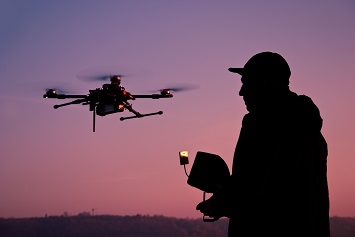Last year, OSHA authorized its regional offices to use unmanned aircraft systems (UAS or “drones”) during workplace inspections.
Anxiety-provoking headlines quickly emerged, including:
- “What’s That Buzzing Overhead? Don’t Get Stung by OSHA’s Safety Inspection Drone;”
- “It’s a Bird…It’s a Plane…It’s OSHA;” and
- “Is That an OSHA Drone Flying Over Your Roofing Job?”
However, OSHA is not surreptitiously flying drones over America’s workplaces.
Enforcement Directorate Policy
Agency investigators may only use drones during inspections and only with the employer’s consent. Regional administrators must comply with several other conditions set out in a memorandum from Thomas Galassi, director of OSHA’s enforcement programs.
Any region wishing to use drones must establish a program overseen by a regional UAS Program Manager. The regional program must comply with all Federal Aviation Administration (FAA) regulations for UAS. Program requirements also include:
- Only allowing a Remote Pilot in Command (RPIC) who has passed an FAA Aeronautical Knowledge Test and obtained a Remote Pilot Certificate with UAS rating to operate UAS;
- Registering all UAS;
- Applying for and obtaining approval for FAA waivers when operating under FAA regulations is not feasible;
- Establishing and maintaining logbooks for RPICs and all UAS; and
- Reporting UAS accidents to the FAA.
UAS Flights During Inspections
OSHA inspections teams may only operate drones with an employer’s consent. The UAS operations team must consist of:
- RPIC,
- Visual Observer (VO), and
- Safety Monitor.
The VO must be an OSHA employee and may be the Compliance Safety and Health Officer overseeing the inspection. The RPIC makes the final determination about whether to conduct flight operations and may terminate a UAS flight at any point.
Conditions and restrictions of UAS operations also include:
- The RPIC must always maintain a line-of-sight of the UAS;
- UAS operations may only be conducted during daylight hours;
- Flight speed must not exceed 100 mph;
- The RPIC must not operate the UAS any higher than 400 feet above ground, except within 400 feet of a structure, where, it is allowable to fly 400 feet above the top of the structure;
- The UAS must yield to all manned aircraft; and
- The UAS must not fly over any persons not directly participating in the inspection, unless they are under a covered structure or inside a stationary vehicle that can provide reasonable protection from a falling drone.
The UAS team must notify all the people on site before starting a UAS flight.
Best Practices
OSHA’s enforcement memo includes an appendix of best practices for UAS operations. The appendix covers:
- Contents of a UAS deployment kit,
- Pre-flight operations,
- Post-flight field procedures,
- Post-flight office procedures,
- Flight reports,
- Program monitoring and evaluation,
- Training,
- Recordkeeping, and
- Accident reporting.
After an operation, video data from the drone’s memory must be copied to a compact disc or other electronic media for file storage and the drone’s memory reformatted.
Employer’s Consent
An employer may refuse to consent to UAS operations during an inspection. The OSHA team cannot use a drone unless the employer grants them permission. If an employer does consent to drone use, the employer or a representative should monitor OSHA’s flight operations to ensure the team abides by FAA regulations, OSHA policy, and agreed upon parameters of the UAS flight.


